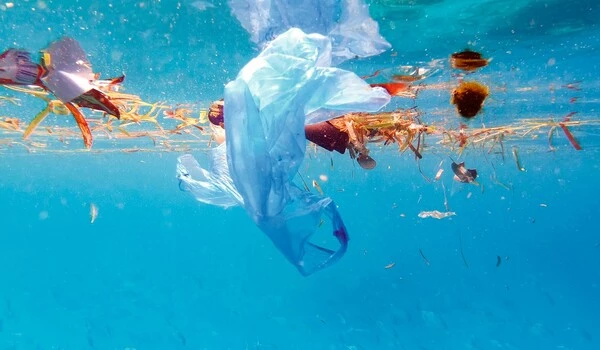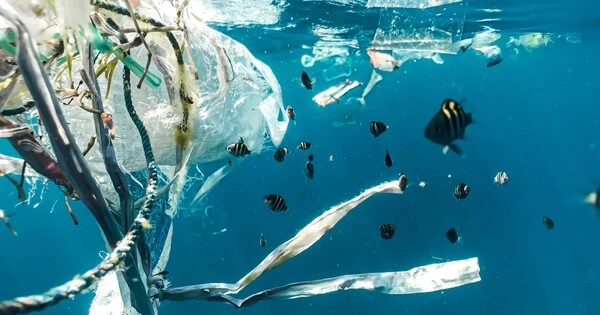Plastic waste can be carried to the Arctic by ocean currents that circulate around the world, such as the Gulf Stream and the North Atlantic Drift. These currents can carry plastic debris from the east coast of North America, Europe, and even from as far away as Asia. In addition, plastic waste can also be transported to the Arctic by atmospheric circulation, which can carry microplastics and other debris over long distances.
Over the course of five years, citizens who went on Arctic sailing cruises surveyed and collected plastic debris washed up on Svalbard’s shores. This is now being investigated. According to the findings, one-third of the plastic debris that still bore imprints or labels that allowed their origin to be determined came from Europe, with Germany accounting for a large portion of that figure.
“Citizen Science” allows citizens to actively participate in scientific research. AWI’s Arctic citizen science project demonstrates how effective this can be. Over the course of five years, citizens who went on Arctic sailing cruises surveyed and collected plastic debris washed up on Svalbard’s shores. This has now been analyzed by the Alfred Wegener Institute.
According to the findings, one-third of the plastic debris that still bore imprints or labels allowing an analysis of its origin came from Europe, with Germany accounting for a large portion of that figure. The findings, published in the journal Frontiers, clearly show that even prosperous industrialised countries such as Germany contribute significantly to the pollution of remote ecosystems such as the Arctic.
Our analysis discovered that, at 80 percent, the clear majority was plastic debris. We know from previous studies and computer models that plastic pollution comes from both local and remote sources.
Anna Natalie Meyer
Plastic debris is a global issue that even the remote Arctic Ocean cannot escape: significant amounts of plastic debris have been observed floating in the Arctic Ocean. However, it remains unknown where it all comes from. A citizen science project conducted by the Alfred Wegener Institute, Helmholtz Centre for Polar and Marine Research (AWI) now offers a first, valuable insights.
“In 2016 we began working with citizens to investigate the composition of plastic debris on Arctic shores,” says AWI researcher Dr Melanie Bergmann, who came up with the idea for the project together with the tour guide and writer Birgit Lutz. In close collaboration with companies offering trips to the Arctic, participating tourists gathered and recorded plastic debris washed up on the shores of Svalbard. From 2016 to 2021, this amounted to 23,000 items with a combined weight of 1,620 kilogrammes.
“We’ve now gone a step further and looked into where the debris with still marks, labels, or imprints came from,” Bergmann says. “Our analysis discovered that, at 80 percent, the clear majority was plastic debris,” says AWI first author Anna Natalie Meyer. Although the majority of the items could be classified as coming from fisheries, their origin could not be determined. Labels or imprints from Arctic countries, particularly Russia and Norway, could still be found in about 1% of the debris. “We know from previous studies and computer models that plastic pollution comes from both local and remote sources,” Meyer says.

“Locally, plastic debris finds its way into the ocean from ships and Arctic communities with inadequate waste management systems. Plastic debris and microplastic are transported to the Arctic Ocean from the Atlantic, North Sea, and North Pacific by various rivers and ocean currents.” Experts discovered debris from as far away as Brazil, China, and the United States off the coast of Svalbard. However, plastic debris from Europe, particularly Germany, also ended up in the High North, accounting for 8% of the total. “Given that Germany is the ‘European champ’ in terms of both plastic production and debris exports, this comparatively high percentage isn’t surprising,” says Melanie Bergmann.
A comparison of the new data with those from previous fieldwork at the sea surface and deep ocean floor, according to the study, shows that much more debris accumulates on Arctic shorelines, making them a sort of final sink. This plastic debris adds to the already-heavy burden placed on Arctic ecosystems by climate change. After all, the Arctic is warming four times faster than the rest of the world.
“Our findings show that even prosperous industrialised countries that can afford better waste management contribute significantly to the pollution of remote ecosystems such as the Arctic,” says AWI expert Melanie Bergmann.
“Accordingly, in order to tackle the problem effectively, not only does local waste management — especially on ships and in fisheries — need to be improved. It’s equally important that global plastic production be massively reduced, especially in the industrialised countries of Europe, North America and Asia, since roughly 11 percent of the global plastic production finds its way into our waterways. This underscores once again the urgent need for an ambitious and legally binding UN Plastics Treaty, which is currently being negotiated and due to enter into force in 2024.”
To address this issue, it is important to take action at a global level to reduce plastic waste and prevent it from entering our oceans and other natural environments. This can include measures such as reducing plastic consumption, improving waste management practices, and increasing public awareness about the impacts of plastic pollution.
















